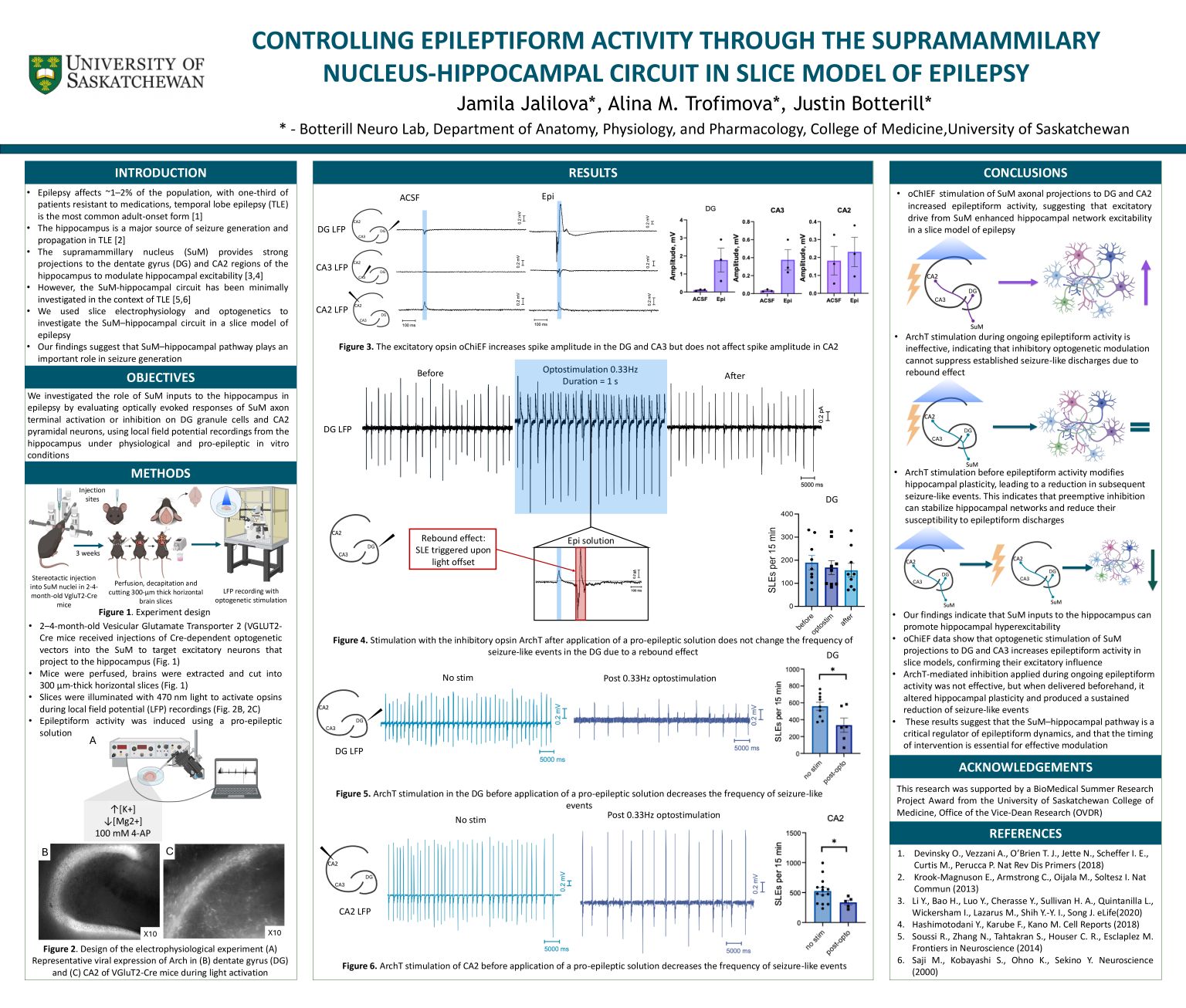
Controlling epileptiform activity through the supramammilary-hippocampal circuit in slice model of epilepsy
Jamila Jalilova
Epilepsy affects 1–2% of the population, and about one-third of patients are resistant to current medication. The most common drug-resistant form, temporal lobe epilepsy (TLE), is closely linked to hippocampal dysfunction. The supramammillary nucleus (SuM) regulates hippocampal circuits via projections to the dentate gyrus (DG) and CA2, and growing evidence implicates this pathway in seizure generation. Understanding how SuM inputs dynamically shape hippocampal excitability may provide new insights into the network mechanisms underlying TLE. Based on preliminary data, we hypothesize that SuM inputs drive hippocampal hyperexcitability in TLE. We predict that optogenetic activation of SuM projections will increase epileptiform activity, whereas inhibition will suppress it. To test this, we use cell-type–specific viral delivery of excitatory (oChiEF) and inhibitory (ArchT) opsins in VGluT2-Cre mice, combined with acute hippocampal slice recordings under pro-epileptic conditions. Our results demonstrate that OChiEF-mediated optogenetic stimulation of SuM axonal projections to the DG and CA3 can enhance epileptiform activity in a slice model of epilepsy. ArchT-mediated optostimulation was not effective during ongoing epileptiform activity, but when applied prior to the onset of epileptiform events, it altered hippocampal plasticity and subsequently reduced epileptiform activity in slices.
